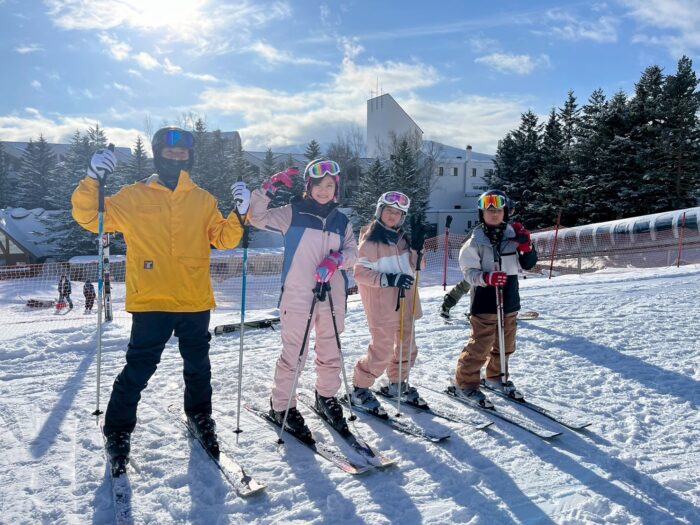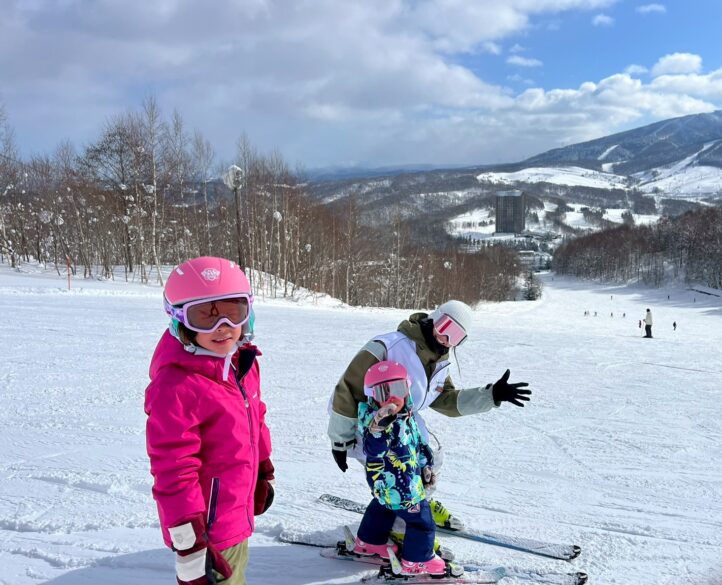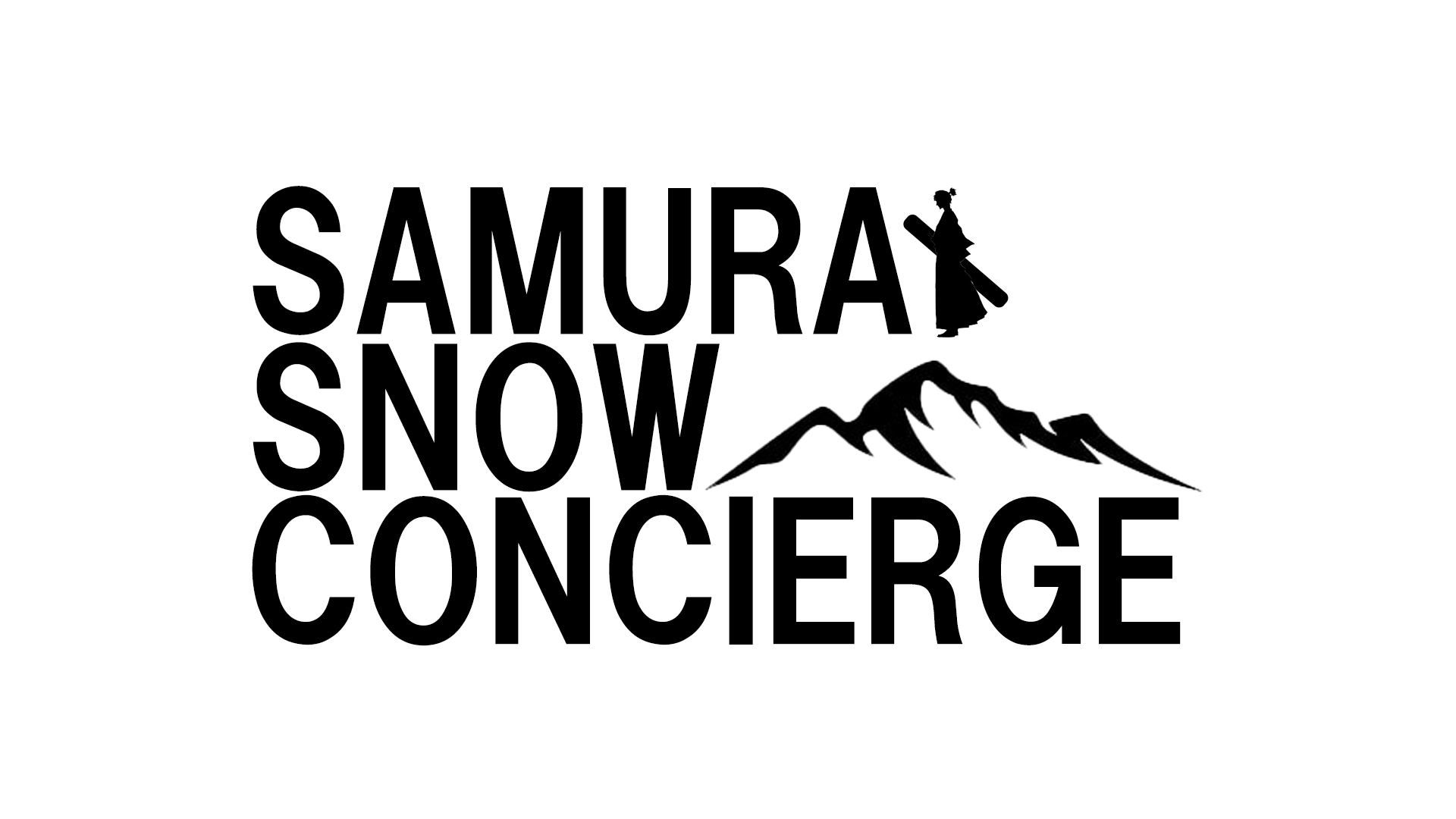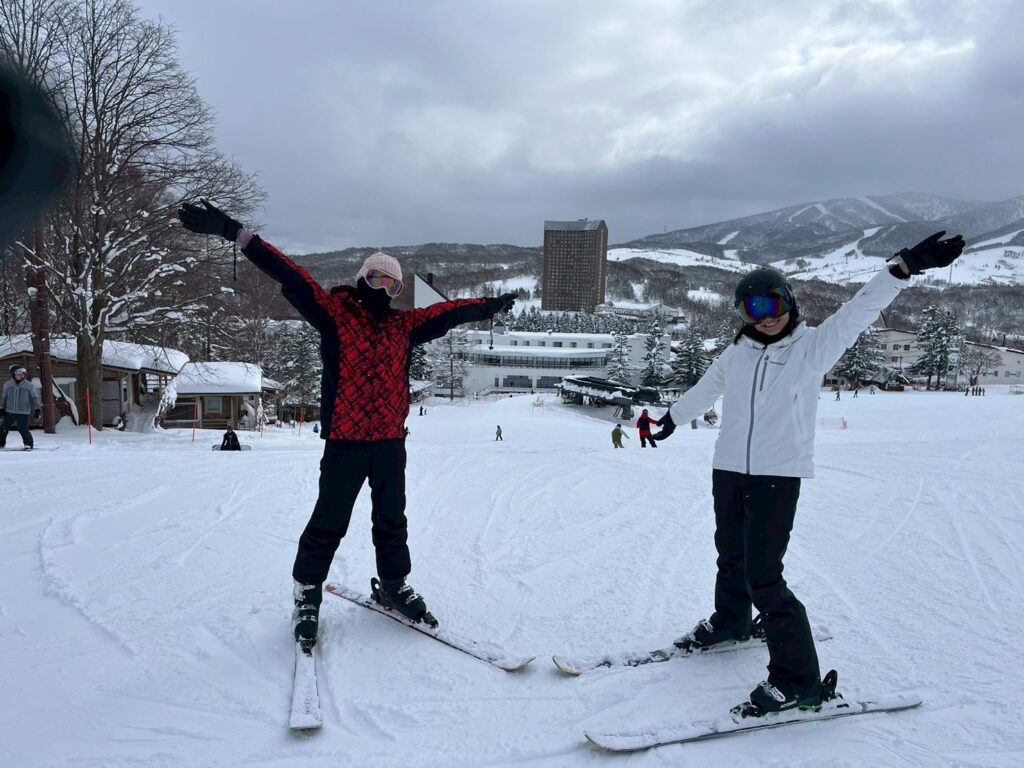For beginners just starting out with skiing, it’s natural to wonder:
“How should I practice to improve?” or “Am I training the right way?”
Even with enthusiasm, if progress feels slow, it’s easy to lose motivation. Simply heading out onto the slopes without a plan often leads to constant falls, frustration, and a lack of fun—which can ruin your skiing experience.
In this guide, we—Samurai Snow Concierge, a ski and snowboard school based in Rusutsu, Hokkaido—will walk you step by step through effective training methods designed to help beginners progress smoothly and safely.
If you’re unsure whether your practice methods are correct, or if you want to learn a more efficient way to improve, this article is for you.
Preparation Before Practice
The very first step for beginners is creating a safe training environment.
Equipment Check
To ski safely, your equipment must be properly fitted.
Make sure your ski boots, skis, and poles are correctly adjusted to your size.
If you’re renting, confirm with the rental shop staff that everything is properly set.
Clothing Check
The next step is checking your ski wear. Comfort, warmth, and mobility are essential.
Wear ski clothing that provides both insulation and ease of movement.
Consider using protective gear (such as pads) to reduce the risk of injury in falls.
Always secure your pockets to avoid losing belongings.
If you carry a phone, avoid keeping it in your chest or back pocket—falling on it may cause rib injuries or hurt your hips. Instead, use a thigh pocket for safer storage.
Stretching
Once you’re geared up, do a light warm-up and stretch your ankles, knees, and hips. This helps prevent injuries and keeps your body flexible. Don’t skip this step—it makes a big difference in safety.
Recommended Practice Steps for Ski Beginners
Here are the basic training steps to follow:

1. Get Used to Wearing Skis
Walk around on flat ground with skis on.
Practice small jumps and turning in place.
Learn how to get up after falling.
Goal: Build balance and familiarize yourself with the unique sense of weight distribution on skis.
2. Learn the Feeling of Sliding (Straight Glide)
Practice sliding straight down a gentle slope.
Keep your knees bent, hips low, and weight slightly forward.
Goal: Understand the sensation of gliding while maintaining a stable posture.
3. Learn How to Stop (Snowplow)
Make a wedge shape with your skis (“pizza” shape).
Apply pressure to your heels to dig the ski edges into the snow.
Goal: Mastering a safe stop is essential before practicing on real slopes.
4. Control Your Speed (Snowplow Glide)
Keep the wedge shape while sliding.
Adjust pressure on your skis to control braking strength and speed.
Goal: Build confidence by learning to adjust your own pace.
5. Practice Changing Direction (Snowplow Turn)
Shift your weight onto the outer ski (the downhill ski).
Look in the direction you want to turn—your body will follow naturally.
Goal: Gain the ability to avoid obstacles and choose your course freely.
6. Practice Linked Turns
Connect right and left snowplow turns smoothly.
Focus on smooth weight transfers from one ski to the other.
Goal: Control your descent safely over longer distances.
7. Practice Getting On and Off the Lift
Getting on: Keep skis straight and sit down naturally.
Getting off: Stand up while looking ahead and slide forward with skis together.
Goal: Being able to use lifts allows you to access more practice terrain.
Summary of Training Steps
For beginners, the correct order is:
Get used to skis
Learn to slide straight
Learn to stop
Control speed
Learn to turn
Practice linked turns
Practice lift use
By patiently mastering each step, you’ll improve safely and efficiently. For faster progress, consider taking lessons where instructors can teach proper form directly.
Common Mistakes Beginners Make (and How to Overcome Them)
Even with practice, beginners often make mistakes such as falling frequently or losing ski control. With the right techniques—and especially with ski school guidance—these issues can be corrected quickly.
1. Leaning Too Far Back
Mistake: Leaning backward out of fear, losing ski control.
Fix: Keep knees bent and lean slightly forward. Instructors can give real-time posture corrections.
2. Skis Spreading Apart
Mistake: Legs open too wide during turns, making control difficult.
Fix: Maintain the snowplow stance and balance your weight properly.
3. Leaning the Upper Body Too Much Inside
Mistake: Tilting only the upper body, causing loss of ski edge grip.
Fix: Turn with your legs, not your torso, and keep your eyes facing downhill.
4. Unable to Stop at Speed
Mistake: Losing control even on gentle slopes.
Fix: Practice braking with the snowplow repeatedly.
5. Trouble Getting On/Off the Lift
Mistake: Standing too late and tripping.
Fix: Stand early with skis together, looking forward.
6. Difficulty Getting Up After Falling
Mistake: Skis stuck in the snow, unable to stand.
Fix: Position skis sideways, stabilize, and push up slowly with your hands.
Benefits of Ski School Lessons

Immediate Form Correction – Instructors spot mistakes right away.
Efficient Progress – Learn faster by repeating correct movements.
Improved Safety – Reduce injury risk with guidance on safe slopes and techniques.
Confidence Boost – Practice in a structured, supportive environment.
Independent Practice vs Ski School
While it’s possible to learn by yourself, self-taught skiing carries higher risks of injury, bad habits, and fatigue from repeated falls. These habits can hinder long-term progress.
In contrast, ski schools provide professional instruction from the basics, making progress faster, safer, and more enjoyable.
Final Thoughts
When practicing as a beginner, always start with proper gear and safety checks. Progress step by step: first get used to skis, then sliding, stopping, speed control, and turning. Once you master the snowplow stop and turn, you’ll be able to enjoy the slopes with confidence.
Self-teaching may lead to frustration, but lessons with instructors will help you improve more safely and effectively.
At Samurai Snow Concierge, our school in Rusutsu, Hokkaido specializes in private ski and snowboard lessons. We focus on safety, detailed instruction, and tailoring our lessons to each individual’s needs.
If you have any questions about ski practice methods or lessons, feel free to reach out to us—we’re active instructors and always happy to help!








コメント